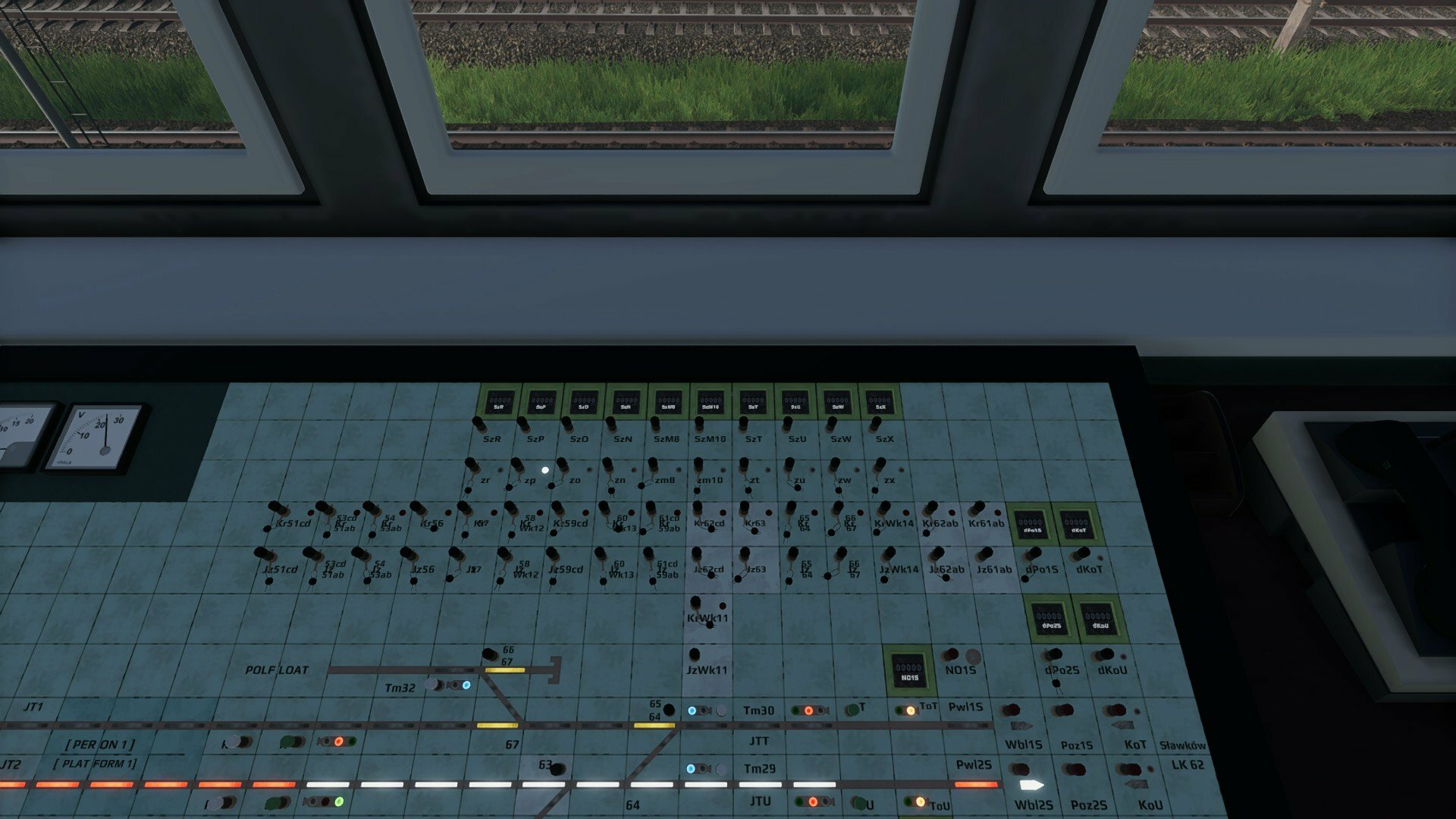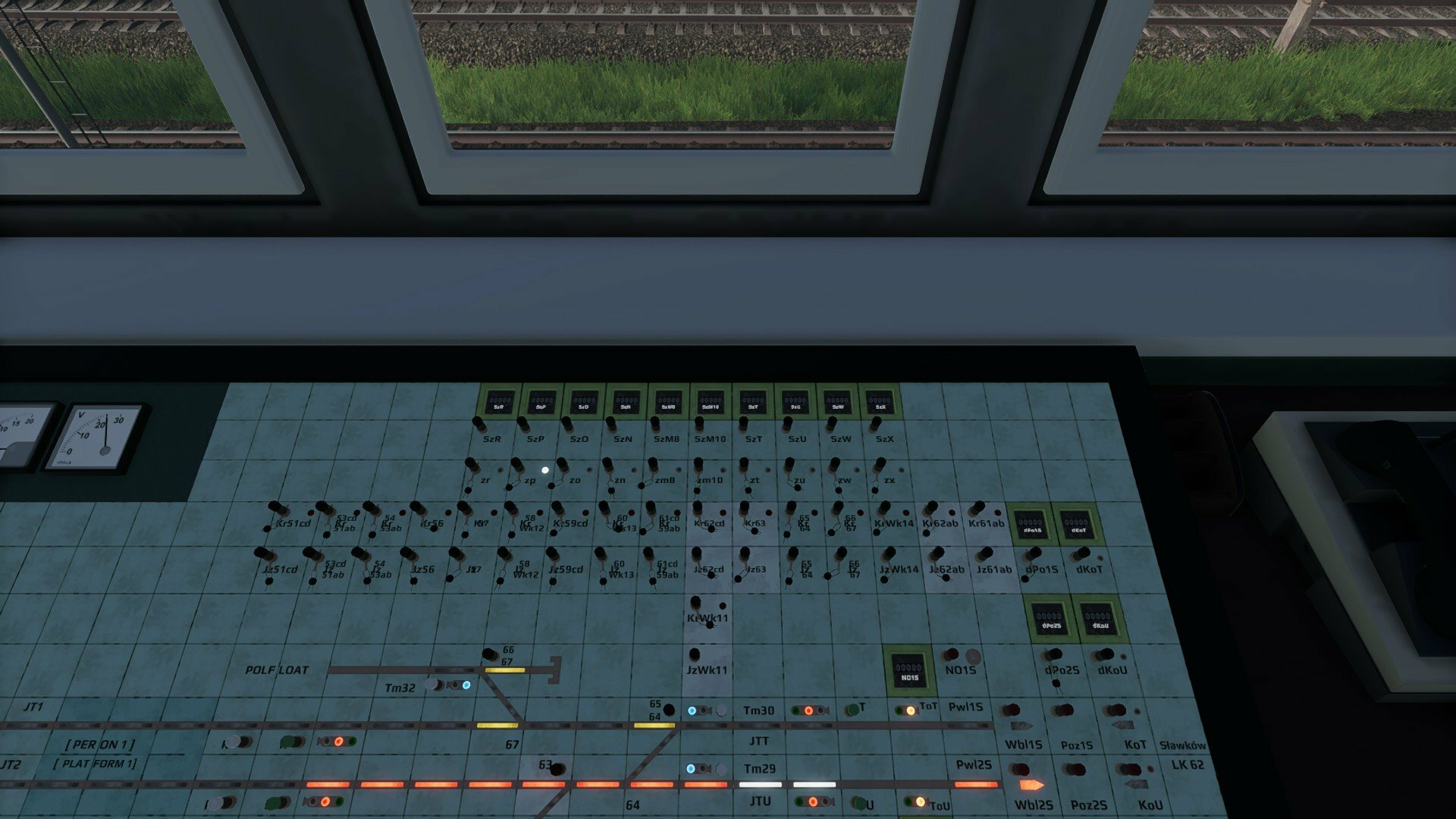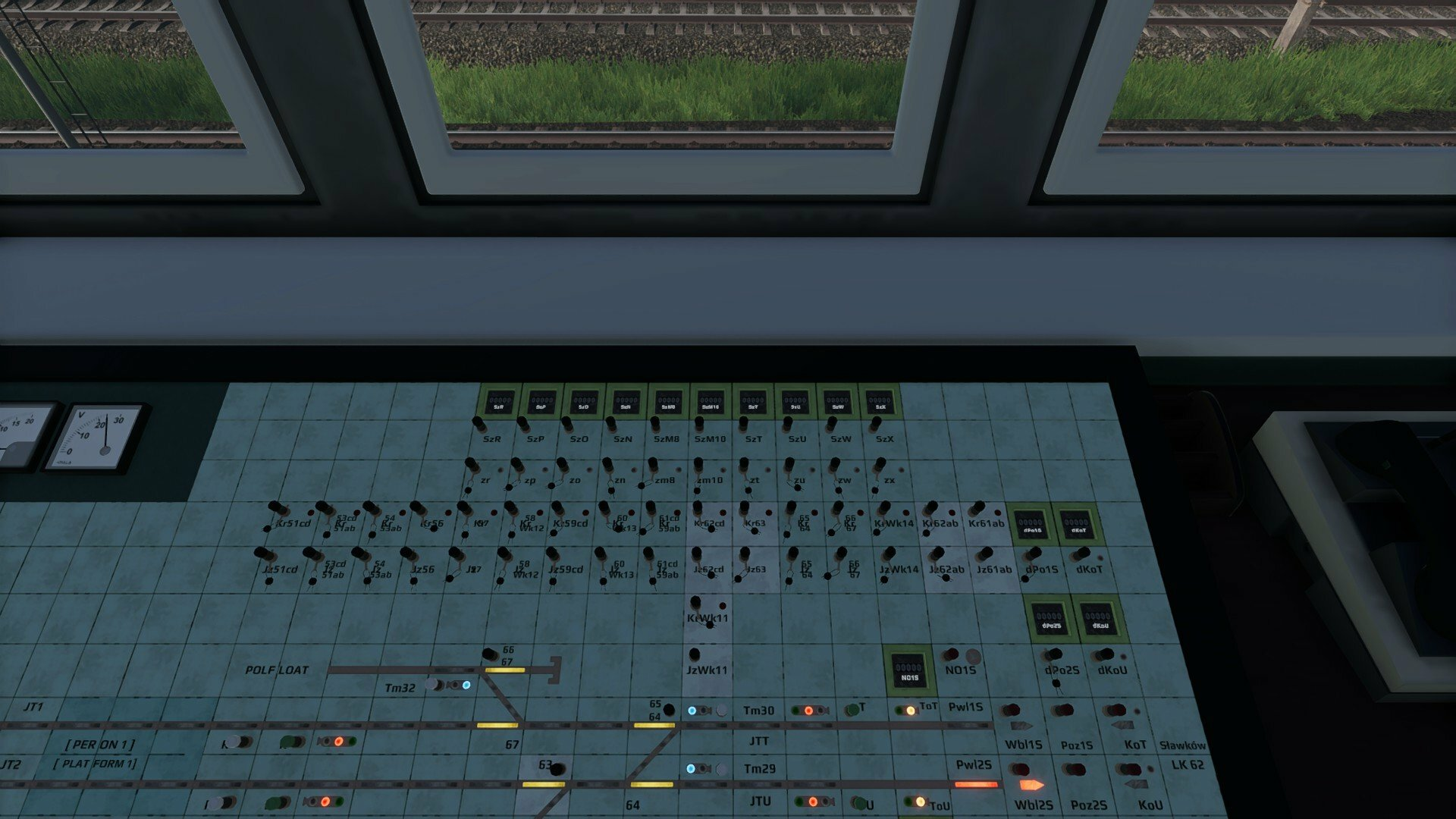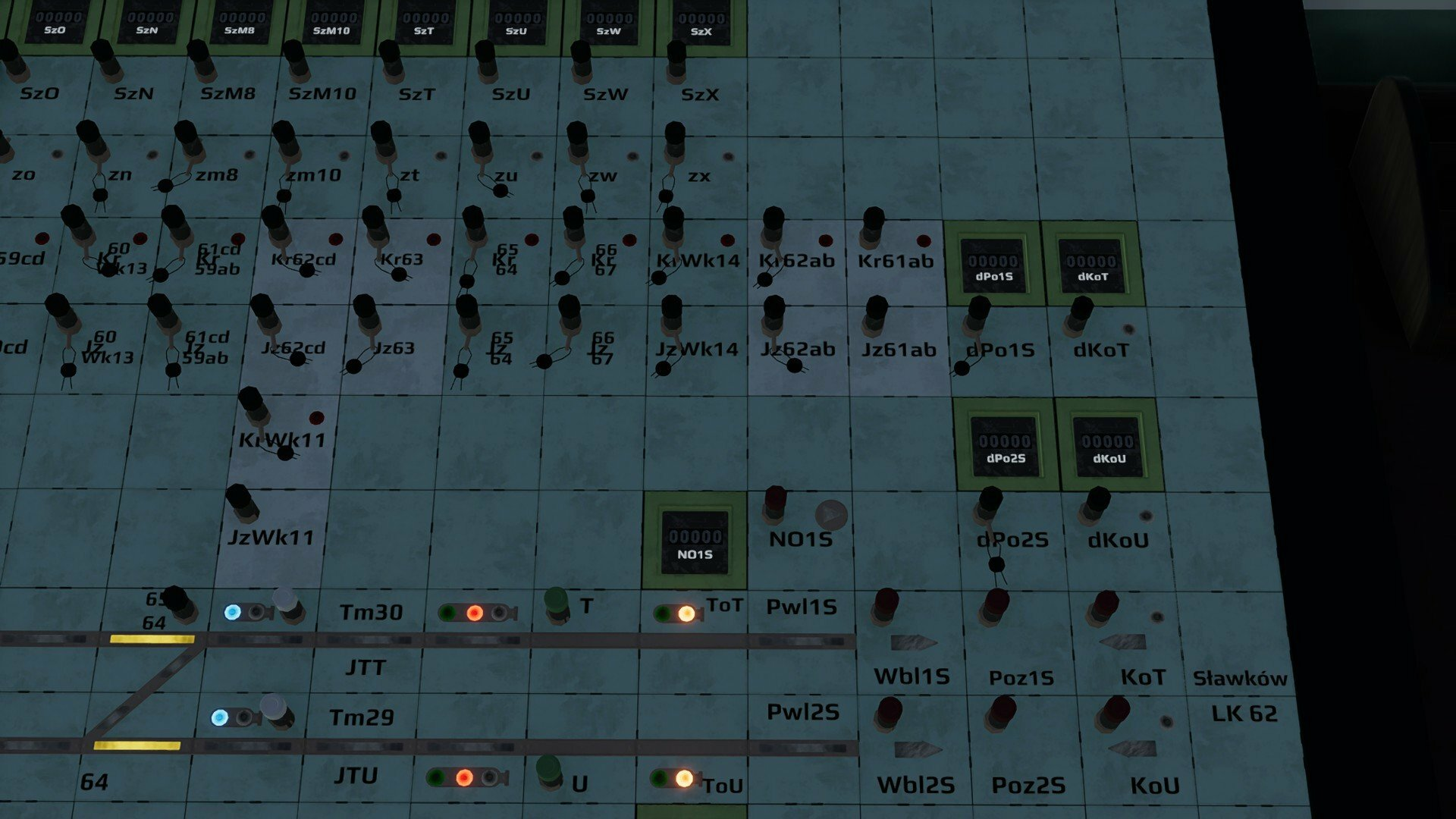Translations:How to operate relay line block equipment/21/en: Difference between revisions
Importing a new version from external source |
Importing a new version from external source |
||
| Line 1: | Line 1: | ||
If the train is not supposed to run anymore, the activation of the block section can still be cancelled after acception. However, this is only possible if the line repetition interlock has not gone active. First we have to pull the "Wbl" button, then the activation in the neighbouring signal box has to be cancelled as well. As soon as this is successful, the system returns to the neutral default position. But in this case we really want the train to proceed and clear the signal. | |||
[[File:20230126014800.png|center]] | |||
The line repetition interlock (Pwl) becomes effective when our exit signal is in the clear position. It will remain effective when the exit signal is set to stop again manually. | |||
If the exit signal is set to stop either by the train or manually by us, the starter field indicator changes to red steady light and the section is considered to be occupied. | |||
[[File:20230126014818 1.png|center]] | |||
[[File:20230126014841.png|center]] | |||
'''ATTENTION: If the exit signal cannot be set to clear, the procedure for the dPo operation is the same like for the C-type block! However, the effect of the operation is different: with the Eap design, the dPo button immediately switches the starter field indicator to red steady light (blocked).''' | |||
After our train has passed the block section, the train is blocked by the neighbouring signal box. The starter field indicator will flash white for a short time and disappear. The system automatically returns to its neutral default position. Line repeating interlock (Pwl) will become ineffective again until the next signal is cleared. | |||
[[File:20230126015139.png|center]] | |||
Latest revision as of 00:58, 18 April 2024
If the train is not supposed to run anymore, the activation of the block section can still be cancelled after acception. However, this is only possible if the line repetition interlock has not gone active. First we have to pull the "Wbl" button, then the activation in the neighbouring signal box has to be cancelled as well. As soon as this is successful, the system returns to the neutral default position. But in this case we really want the train to proceed and clear the signal.

The line repetition interlock (Pwl) becomes effective when our exit signal is in the clear position. It will remain effective when the exit signal is set to stop again manually. If the exit signal is set to stop either by the train or manually by us, the starter field indicator changes to red steady light and the section is considered to be occupied.


ATTENTION: If the exit signal cannot be set to clear, the procedure for the dPo operation is the same like for the C-type block! However, the effect of the operation is different: with the Eap design, the dPo button immediately switches the starter field indicator to red steady light (blocked). After our train has passed the block section, the train is blocked by the neighbouring signal box. The starter field indicator will flash white for a short time and disappear. The system automatically returns to its neutral default position. Line repeating interlock (Pwl) will become ineffective again until the next signal is cleared.
